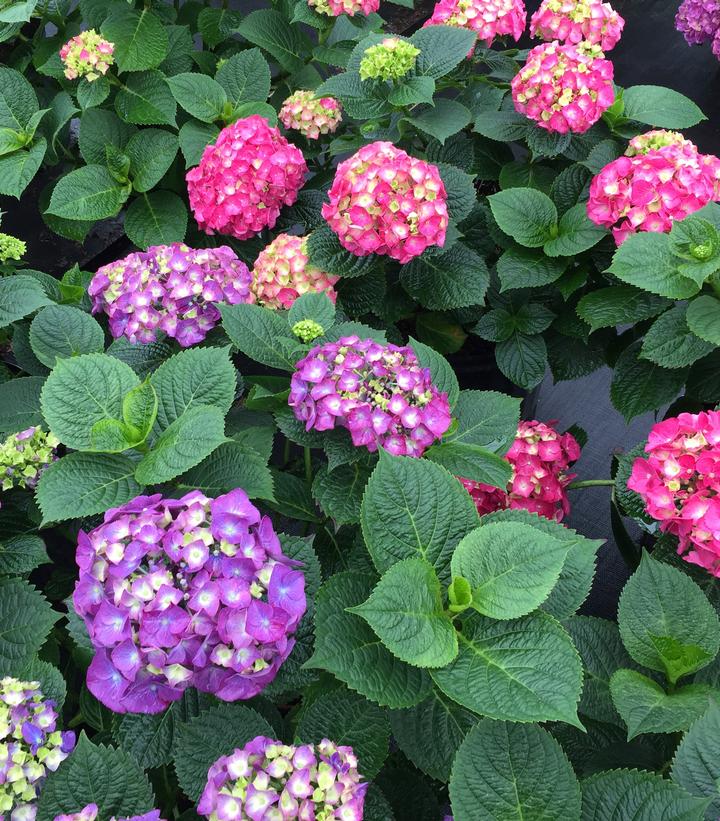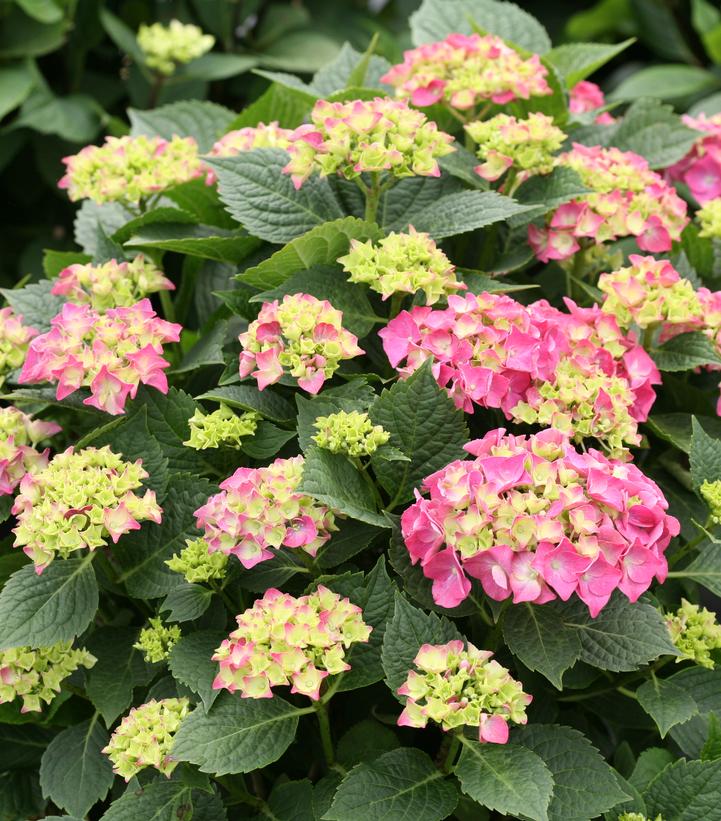« Previous Plant | Next Plant »
Hydrangea macrophylla Let's Dance Big Band® ('SMNHMP')
Let's Dance Big Band® BIgleaf Hydrangea: Patent PP32,514
- » Withstands winter cold better than others
- » Big, colorful flowers
- » Improved reblooming, for more flowers for a longer period
- » Continuous bloom or rebloomer
- » Salt tolerant

- Category:Shrub
- Breeder:Proven Winners
- Hardiness Zone:5-9
- Height:2-3 ft
- Spread:2-3 ft
- Bloom Color: Pink Shades, Purple Shades
An endless drive for improvement is what motivates our big-leaf hydrangea breeding, so for us to make a new introduction, a plant has to be signficantly better than what's already available. That's why Let's Dance Big Band hydrangea has been added to the line: it combines bodaciously big mophead flowers with pure, true colors (pink in neutral/basic conditions, blue in acidic conditions) on a plant that survives winter better and reblooms better. That means more flowers, from the beginning of hydrangea season until the snowflakes fly!
Foliage Color
| • | Green |
Maintenance and Care
| • | Salt Tolerant |
Programs
| • | Proven Winners |
Season of Interest (Flowering)
| • | Summer Bloomer |
Season of Interest (Foliage)
| • | Summer |
Habit
| • | Mounding |
Growing & Maintenance Tips for Hydrangea macrophylla Let's Dance Big Band®
Soil and exposure: Big-leaf hydrangeas should be planted in moist but well-drained soil - they cannot tolerate wet conditions. It's a good idea to have a 2-3" layer of mulch in all climates. Plant with at least some sun each day; the hotter your climate, the more shade the plant can withstand.
Pruning: big-leaf hydrangeas cannot be pruned at any point in the year without negatively impacting the flowering. As such, it's best to avoid pruning this type of hydrangea altogether. If portions of the plant were damaged from winter weather, they can be removed in spring when it is clear where the new growth is emerging.
Fertilizing: The key to getting reblooming hydrangeas to produce new-wood flower buds is to keep them growing vigorously all summer. Hence, fertilizer can be beneficial. Apply a granular rose fertilizer in early spring, when the ground has thawed, and again in late spring. Never fertilize after late July; that can interfere with the plant going dormant.
Color: The "default" color for big-leaf hydrangeas tends to the pink/red tones, and that is the color they will display in neutral (pH 7.0) or higher soil. The soil must be acidic (at least 6.5 or so) for the blue color to develop, and aluminum, a naturally occurring soil mineral, must be present. If you are not satisfied with the flower color in your yard, get a soil test so that you know exactly what must be changed. We do not recommend applying any kind of treatment "just in case" - that's a waste of time and money, and could potentially lead to pollution or create inhospitable conditions in the soil.


